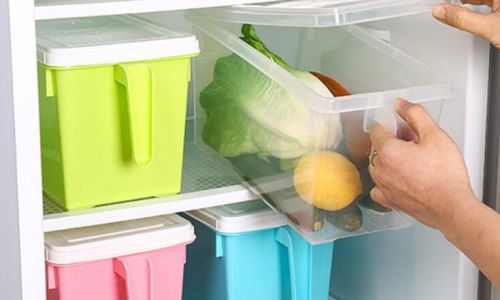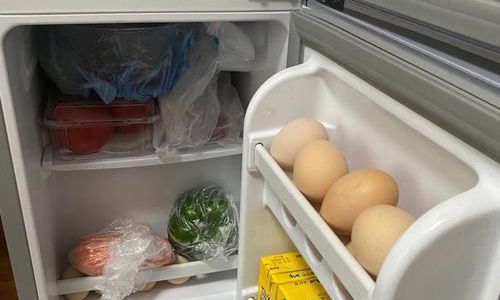Abalone, a prized delicacy in global cuisine, is cherished for its unique texture, rich flavor, and nutritional benefits. However, like all perishable seafood, its freshness is finite, and improper storage can lead to spoilage, food waste, or even health risks. This article delves into the intricacies of abalone storage, exploring how long it can safely remain in the refrigerator, factors influencing its shelf life, and best practices to maximize its quality. Whether you’re a home cook, a seafood enthusiast, or a professional chef, understanding these guidelines is essential for savoring abalone at its best while avoiding potential hazards.

Understanding Abalone: A Brief Overview
Abalone is a marine snail belonging to the Haliotidae family, found in coastal waters worldwide. Its meat, a muscle-rich foot, is highly valued in dishes like sushi, stews, and stir-fries. Due to its delicate nature, abalone requires careful handling from purchase to consumption. Fresh abalone is often sold live, shucked (removed from its shell), or processed (frozen, canned, or smoked). Each form has distinct storage requirements, making it crucial to tailor preservation methods accordingly.
Factors Affecting Abalone’s Shelf Life
The longevity of abalone in the refrigerator depends on several variables:
- Freshness at Purchase: Abalone begins deteriorating the moment it’s harvested. Purchasing from reputable suppliers ensures it hasn’t been mishandled.
- Temperature: Refrigerators should maintain a consistent temperature of 40°F (4°C) or below to slow bacterial growth.
- Packaging: Proper sealing prevents exposure to air and contaminants.
- Contamination: Cross-contamination with raw meat, vegetables, or utensils can accelerate spoilage.
Proper Storage Techniques for Abalone
Refrigeration Guidelines
-
Fresh, Whole Abalone:

- If purchased live, store it in a breathable container (e.g., a bowl covered with a damp cloth) in the coldest part of the fridge. Avoid submerging in water, as this can suffocate the creature.
- Consume within 24–48 hours.
-
Shucked or Cleaned Abalone:
- Rinse under cold water to remove debris.
- Pat dry with paper towels and place in an airtight container or resealable bag.
- Layer with ice packs or frozen gel packs to maintain low temperatures.
- Shelf life: 2–3 days.
-
Cooked Abalone:
- Store in shallow, airtight containers to ensure rapid cooling.
- Avoid overcrowding the fridge, as this disrupts airflow.
- Shelf life: 3–4 days.
Freezing for Long-Term Storage
-
Raw Abalone:

- Clean thoroughly, remove the intestine, and slice into portions.
- Blanch in boiling water for 10–15 seconds to preserve texture.
- Vacuum-seal or wrap tightly in freezer-safe plastic, then aluminum foil.
- Shelf life: 6–12 months.
-
Cooked Abalone:
- Freeze in airtight containers or heavy-duty freezer bags.
- Thaw overnight in the fridge before reheating.
Canned or Processed Abalone
- Unopened cans can last 3–5 years if stored in a cool, dry pantry.
- Once opened, transfer to a sealed container and refrigerate for 3–4 days.
Signs of Spoilage: When to Discard Abalone
Spoiled abalone exhibits clear indicators of decay:
- Visual Cues: Dull color, mold, or a slimy film.
- Odor: A pungent, ammonia-like or sour smell.
- Texture: Mushiness or excessive dryness.
- Taste: Never taste questionable abalone—err on the side of caution.
Shelf Life by Abalone Type
| Type | Refrigerator (40°F/4°C) | Freezer (0°F/-18°C) |
|---|---|---|
| Fresh, Whole | 24–48 hours | 6–12 months |
| Shucked/Cleaned | 2–3 days | 6–12 months |
| Cooked | 3–4 days | 2–3 months |
| Canned (Unopened) | 3–5 years (pantry) | N/A |
| Canned (Opened) | 3–4 days | N/A |
Tips to Extend Abalone’s Freshness
- Clean Immediately: Remove guts and viscera to prevent bacterial growth.
- Use Acidulated Water: Soak in saltwater with vinegar or lemon juice to inhibit microbes.
- Avoid Moisture: Excess humidity encourages spoilage; pat dry before storing.
- Label Containers: Note the storage date to track freshness.
- Freeze in Portions: Smaller batches thaw faster and reduce waste.
Health Risks of Consuming Spoiled Abalone
Spoiled abalone may harbor pathogens like Vibrio parahaemolyticus or Salmonella, causing:

- Nausea, vomiting, and diarrhea.
- Abdominal cramps and fever.
- In severe cases, septicemia or neurological symptoms.
Vulnerable populations (pregnant women, elderly, immunocompromised individuals) face higher risks. Always cook abalone to an internal temperature of 145°F (63°C) to kill bacteria.
Common Mistakes to Avoid
- Storing at Room Temperature: Abalone should never sit out for >2 hours.
- Reusing Contaminated Utensils: Cross-contamination spreads bacteria.
- Ignoring Expiry Dates: Processed abalone has a strict timeline.
- Thawing at Room Temperature: Use the fridge or cold water instead.
- Overstocking the Fridge: Poor airflow raises internal temperatures.
Conclusion
Abalone’s ephemeral freshness demands meticulous care. By adhering to storage best practices—refrigerating promptly, sealing airtight, and monitoring for spoilage—you can extend its shelf life while preserving its culinary allure. Whether you’re preparing a gourmet feast or stocking up for future meals, respecting these guidelines ensures safety, quality, and minimal waste. Remember: when in doubt, toss it out. Your taste buds and health will thank you.
Final Word: Abalone is a treasure of the sea, but its beauty lies not just in flavor, but in the responsibility we bear to handle it correctly. Treat it with care, and it will reward you with unforgettable dining experiences.







0 comments